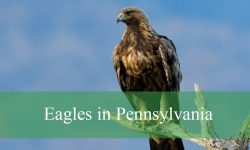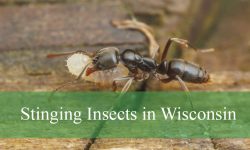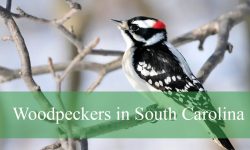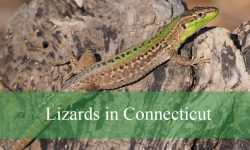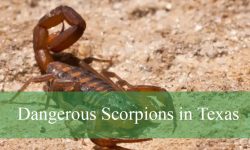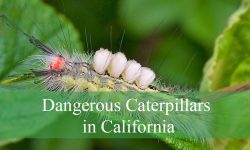Virginia hosts a remarkable diversity of woodpeckers, ranging from the tiny Downy Woodpecker to the dramatic Pileated Woodpecker. These birds captivate birdwatchers with their striking plumage, unique drumming sounds, and important role in maintaining healthy forest ecosystems.
Across the state, woodpeckers can be found in deep forests, wetlands, open woodlands, and even suburban backyards. While species like the Red-bellied Woodpecker and Northern Flicker are common and widespread, others such as the American Three-toed Woodpecker are rare visitors. Each species brings its own distinct habits and characteristics that make birdwatching in Virginia exciting throughout the year.
This guide highlights the nine types of woodpeckers found in Virginia, covering their appearance, behaviors, habitats, and the best times to see them. With this knowledge, bird enthusiasts can enjoy closer encounters with these fascinating birds and better understand their place in Virginia’s natural landscape.
Types of Woodpeckers Found in Virginia
Downy Woodpecker (Dryobates pubescens)
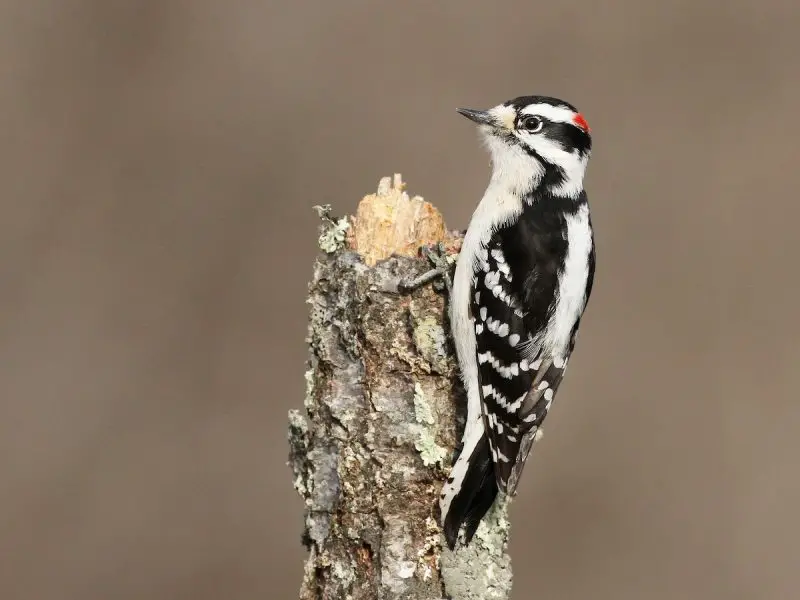
The Downy Woodpecker is the smallest woodpecker species in Virginia, measuring only about 6 to 7 inches in length. It has a compact body with black-and-white plumage, a short bill, and a distinctive checkered pattern on its wings. Males can be identified by a small red patch on the back of the head, while females lack this marking. Its small size and quick movements often make it resemble a sparrow at first glance.
This species is commonly found in woodlands, parks, and backyards, where it often visits bird feeders for suet and sunflower seeds. Its short bill is perfectly adapted for drilling into thin branches and bark in search of insects, larvae, and eggs. The Downy Woodpecker is highly adaptable, thriving in both rural and suburban settings across Virginia.
Behaviorally, the Downy Woodpecker is known for its rapid drumming and high-pitched “pik” calls. Unlike some larger woodpeckers, it tends to forage on smaller tree limbs and even weed stems, showing a preference for lighter vegetation. It is a frequent visitor to backyard feeders, making it one of the easiest woodpeckers for birdwatchers to spot up close.
In Virginia, this woodpecker can be found year-round, providing bird enthusiasts with continuous opportunities to observe it. Its tolerance of human presence, coupled with its playful and energetic habits, has made it one of the most recognized woodpeckers in the state.
Hairy Woodpecker (Dryobates villosus)
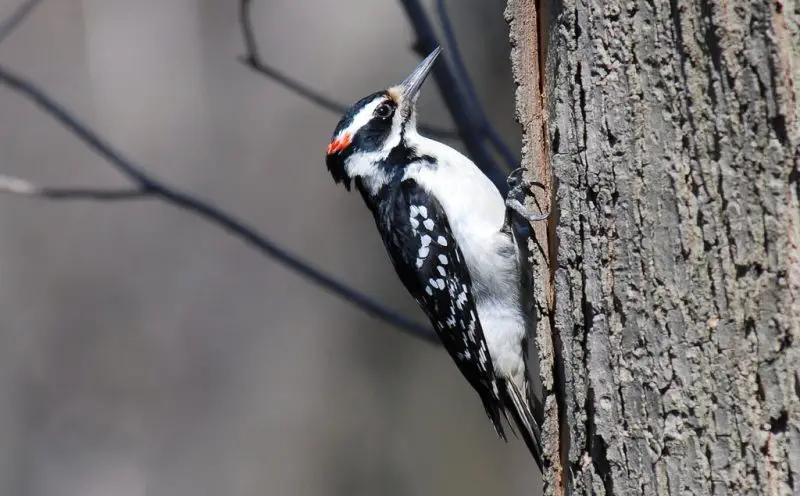
The Hairy Woodpecker is very similar in appearance to the Downy Woodpecker but is noticeably larger, reaching 9 to 10 inches in length. It has striking black-and-white plumage, a long chisel-like bill, and a clean white underside. The male also carries a small red patch on the back of the head, while the female does not. A key identification tip is its much longer bill compared to the Downy’s shorter one.
This species inhabits mature forests, wooded parks, and rural areas with large trees. It prefers thicker tree trunks for foraging and nesting, unlike the Downy, which favors thinner branches. Its diet consists of wood-boring insects, beetle larvae, and spiders, but it will also feed on seeds and berries when insects are scarce.
The Hairy Woodpecker has a louder and more forceful drumming pattern compared to the Downy. Its sharp “peek” call is distinctive, and its strong, deliberate pecking often echoes through forests. This bird is less tolerant of suburban environments, making it more commonly encountered in deeper woodland areas across Virginia.
Although less common around feeders, Hairy Woodpeckers will occasionally visit suet feeders, especially during the colder months. Their strong bills allow them to excavate deeper into wood, making them effective predators of insects hiding beneath bark.
Red-bellied Woodpecker (Melanerpes carolinus)
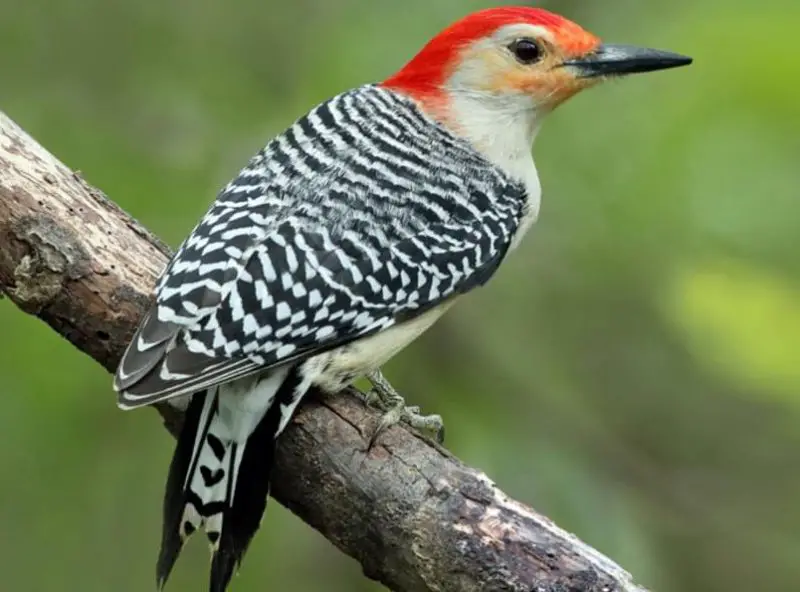
The Red-bellied Woodpecker is one of the most striking species in Virginia, with a pale, slightly reddish wash on its belly and a vibrant red crown that extends from its beak to the back of the neck in males. Females have red only on the back of the head and nape. Its back is covered with bold black-and-white barring, giving it a zebra-like pattern.
This species is commonly found in deciduous forests, wooded suburbs, and even city parks. It adapts well to human-altered environments and often visits backyard feeders for suet, nuts, and fruits. Its diet is highly varied, ranging from insects and spiders to acorns, seeds, and berries.
Red-bellied Woodpeckers are known for their loud, rolling “churr” calls and sharp drumming, which they use both for communication and territorial defense. They are also skilled foragers, frequently caching food in bark crevices for later consumption. Their long, barbed tongues help them extract insects from deep crevices in wood.
In Virginia, this species is present year-round, making it one of the most frequently seen and heard woodpeckers. Its adaptability to urban areas and bold, vocal behavior make it a familiar sight for birdwatchers and homeowners alike.
Northern Flicker (Colaptes auratus)
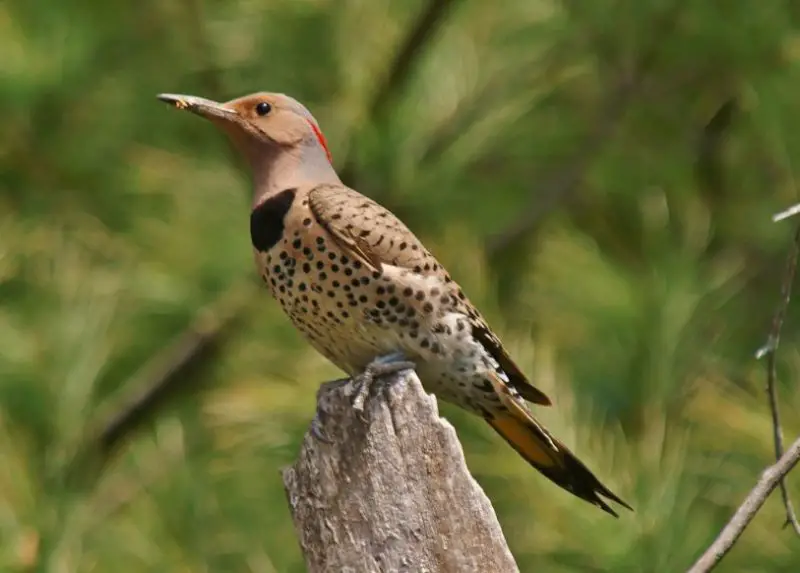
The Northern Flicker is a large, distinctive woodpecker, measuring 11 to 12 inches long. Unlike most woodpeckers, it often forages on the ground. Its plumage features a brown body with black spots on the chest, a black crescent on the breast, and a patterned back. In Virginia, the “Yellow-shafted” form is common, identifiable by the bright yellow coloration under its wings and tail.
This species is unique in its feeding habits, as it prefers to search for ants and beetles on the ground rather than drilling into wood. It also consumes fruits, berries, and seeds, especially during winter when insects are scarce. Its long, slightly curved bill is ideal for probing soil and anthills.
The Northern Flicker has a distinctive “wick-a-wick-a-wick” call and a loud, ringing drumming sound. In flight, it shows a flashy yellow underside and a white rump patch, making it easy to recognize. Despite being a woodpecker, its behavior is more reminiscent of a thrush when feeding on open lawns.
In Virginia, Northern Flickers are found year-round in woodlands, forest edges, and suburban neighborhoods. Their adaptability and unique ground-foraging habits make them one of the most interesting woodpecker species in the region.
Pileated Woodpecker (Dryocopus pileatus)
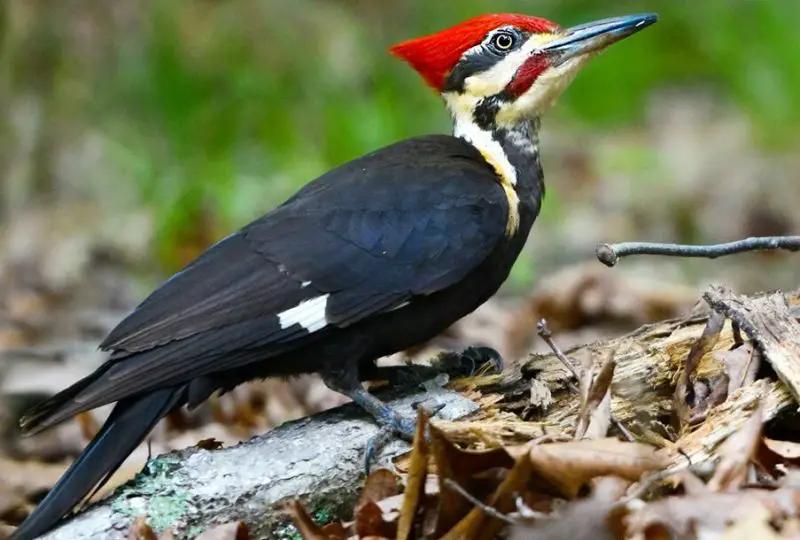
The Pileated Woodpecker is the largest woodpecker in Virginia, measuring up to 19 inches long with a wingspan approaching 30 inches. It is easily identified by its striking black body, bold white stripes on the face and neck, and a bright red crest on its head. Its size and loud calls make it one of the most dramatic birds in the forest.
This species inhabits large tracts of mature forests, especially those with tall hardwoods and dead trees for nesting and foraging. It feeds primarily on carpenter ants, beetle larvae, and other insects hidden deep within decaying wood. Its powerful bill can excavate large, rectangular holes in tree trunks, often leaving behind cavities that benefit other wildlife.
The Pileated Woodpecker has a loud, echoing “kuk-kuk-kuk” call, which carries over long distances. Its drumming is slow and powerful, sounding more like hammering than the rapid rattles of smaller species. Watching one forage is impressive, as wood chips fly while it chisels deeply into trees.
In Virginia, Pileated Woodpeckers are present year-round in forests, wooded parks, and rural areas. Their large size and red crest make them unforgettable sightings for bird enthusiasts, often considered a symbol of wild, undisturbed woodlands.
Red-headed Woodpecker (Melanerpes erythrocephalus)
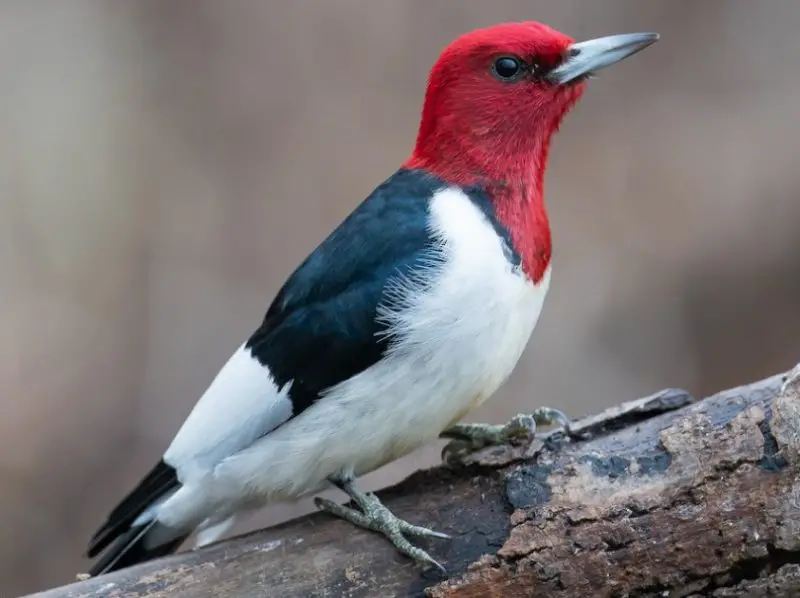
The Red-headed Woodpecker is one of the most visually striking woodpeckers in Virginia. Adults have a completely red head, neck, and throat, with a crisp black back and large white wing patches. Unlike most other woodpeckers with patterned markings, its bold and clean coloration makes it unmistakable in the field. Juveniles, however, are duller with brownish heads until they molt into adult plumage.
This species prefers open woodlands, orchards, and areas with scattered trees such as farmlands and parks. It often chooses dead trees or utility poles for nesting and is more likely than other woodpeckers to perch on exposed branches. Red-headed Woodpeckers are known for their varied diet, feeding on insects, nuts, berries, and even small vertebrates. They are also excellent at catching insects in mid-air, a behavior uncommon among woodpeckers.
Red-headed Woodpeckers are highly territorial and aggressive, often driving away other birds from their feeding and nesting areas. They are also one of the few woodpeckers known to store food by hiding it in crevices or under bark. Their loud “churr” calls and strong drumming echo clearly through their habitats.
In Virginia, this species is present year-round but is considered less common than others due to habitat loss. Still, in the right environment, its vivid appearance and bold behavior make it a thrilling sight for birdwatchers.
Yellow-bellied Sapsucker (Sphyrapicus varius)
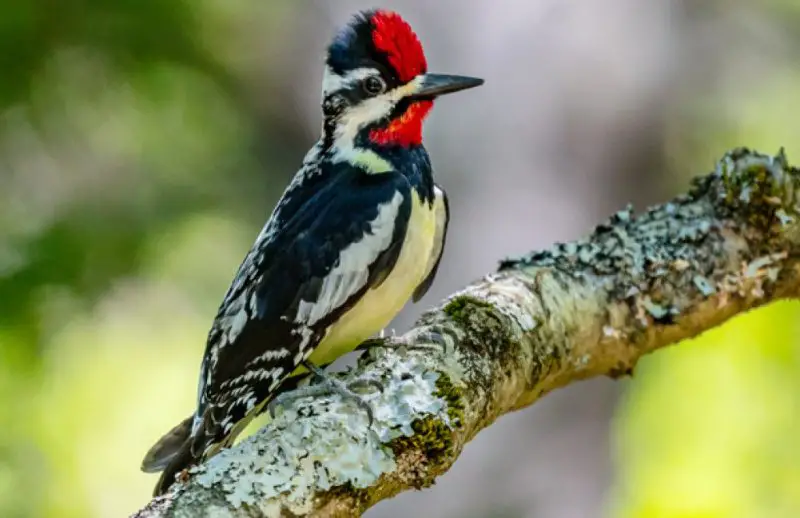
The Yellow-bellied Sapsucker is a medium-sized woodpecker recognized by its mottled black-and-white body, white wing stripe, and pale yellow wash on its belly. Males have a red forehead and throat, while females have only a red forehead. Their plumage blends well with bark, but the neat rows of sap wells they drill in trees often reveal their presence.
This species is best known for its feeding behavior. It drills small holes in tree trunks to access sap, which it consumes along with trapped insects. The sapsucker favors trees like maples and birches, returning repeatedly to maintain its “sap wells.” Other animals, such as hummingbirds and bats, often take advantage of these wells too.
The Yellow-bellied Sapsucker produces a distinctive irregular drumming pattern, often described as a “morse-code-like” rhythm. Its vocalizations include nasal “mew” sounds that help distinguish it from other woodpeckers. Although not as loud or flashy as the Pileated or Red-headed Woodpecker, its unique feeding style makes it fascinating to observe.
In Virginia, this species is generally migratory, present mainly in winter and during migration periods. Birdwatchers are most likely to spot them in wooded areas, orchards, or even backyards during the colder months.
Ivory-billed Woodpecker (Campephilus principalis)
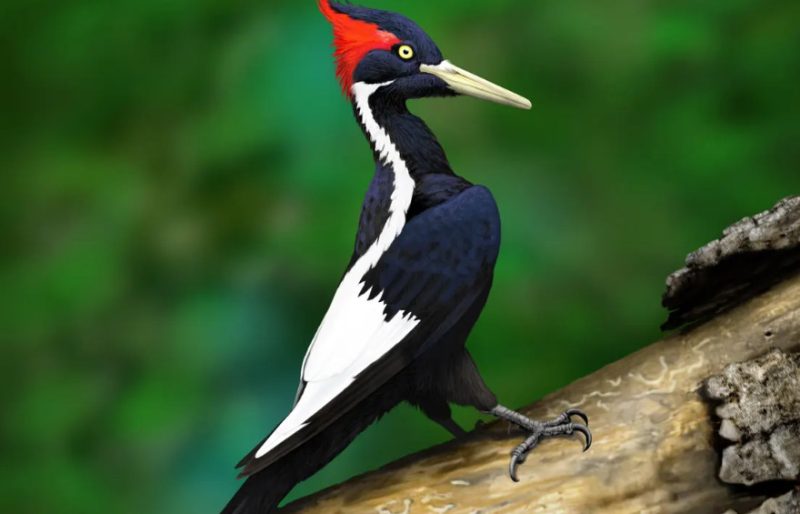
The Ivory-billed Woodpecker is one of the most legendary birds of North America and was once found in the southeastern United States, including historical records in Virginia. It was the second-largest woodpecker in the world, measuring up to 20 inches in length, with striking black plumage, white wing patches, and a long, pale ivory-colored bill. Males also displayed a red crest, while females had a black one.
This species required vast tracts of mature bottomland hardwood forests and swamps, where it fed primarily on beetle larvae found in dead and decaying trees. Its powerful bill allowed it to strip bark from trees in large sheets, leaving distinct feeding signs. Due to logging and habitat destruction, its numbers rapidly declined in the late 19th and early 20th centuries.
The Ivory-billed Woodpecker was considered critically endangered and is now widely believed to be extinct, though occasional unconfirmed sightings keep hope alive. Its calls were said to be loud “kent” notes, resembling a toy trumpet. Its drumming was described as double taps, slower and more powerful than that of the Pileated Woodpecker.
In Virginia today, it is not realistically expected to be seen, but historically, it held a place among the state’s woodpecker species. Its mysterious status continues to inspire birdwatchers and conservationists who dream of rediscovering this “Lord God Bird.”
American Three-toed Woodpecker (Picoides dorsalis)
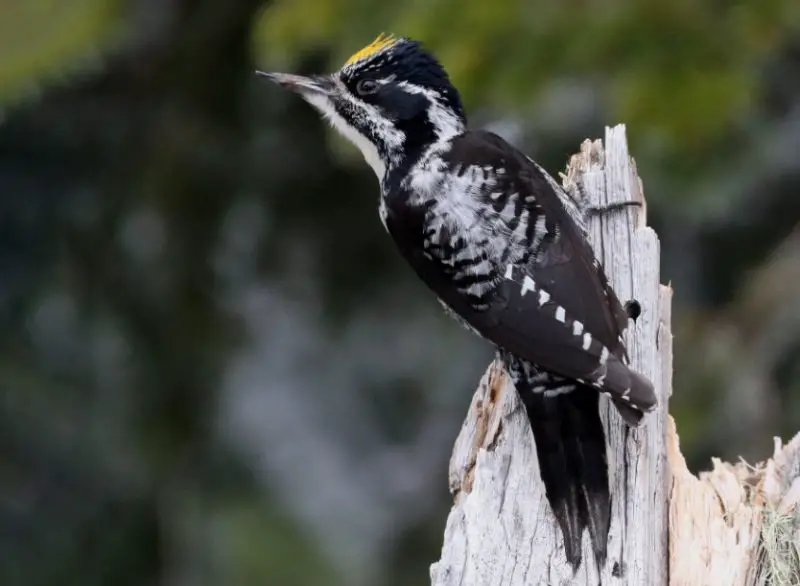
The American Three-toed Woodpecker is a small, rare species in the eastern United States and is primarily associated with boreal forests. Measuring about 8 to 9 inches long, it is identified by its black-and-white barred back, a white underside, and a distinctive yellow crown patch in males. Unlike most woodpeckers, it has only three toes instead of four, an adaptation that allows it to cling tightly to tree trunks.
This species specializes in feeding on bark beetles and other wood-boring insects. It is often found in burned forests or areas with dying conifer trees, where it peels away bark to expose insects underneath. Its foraging behavior leaves behind flaked bark and stripped patches, providing clear evidence of its activity.
The American Three-toed Woodpecker is quiet and less conspicuous than many other woodpeckers. Its drumming is soft and slow, and its calls are faint compared to the sharp notes of Downy or Hairy Woodpeckers. This reserved nature makes it harder to detect in dense forests.
In Virginia, this species is considered extremely rare, typically appearing only as a wandering visitor from northern regions. While not a common sight, its presence highlights the diversity of woodpeckers that can occasionally be found within the state.
Best Time and Place to See Woodpeckers in Virginia
Virginia offers excellent opportunities to observe woodpeckers throughout the year. Since some species are permanent residents and others migrate seasonally, birdwatchers can enjoy spotting different woodpeckers depending on the season. Year-round residents like the Downy, Hairy, Red-bellied, Pileated, and Northern Flicker can be seen in every season, making them reliable sightings for bird enthusiasts. Winter is particularly good for spotting Yellow-bellied Sapsuckers, as they migrate south into Virginia during the colder months.
The best habitats to find woodpeckers in Virginia include mature forests, wooded parks, orchards, and suburban backyards. Larger species like the Pileated Woodpecker are most often encountered in deep forests with abundant dead trees, while smaller species like the Downy Woodpecker are frequent visitors to backyard feeders. Open woodlands and farmland edges are also excellent places to spot Red-headed Woodpeckers, which prefer more open landscapes than most other species.
For the best birding experience, early mornings are the most productive time of day. This is when woodpeckers are most active, drumming, calling, and foraging for food. Places such as Shenandoah National Park, Great Dismal Swamp, and local state parks provide prime opportunities to see multiple species in one trip. Bird feeders stocked with suet, peanuts, or sunflower seeds also increase your chances of attracting these birds right into your backyard.
FAQs About Woodpeckers in Virginia
What is the largest woodpecker in Virginia?
The Pileated Woodpecker is the largest species in Virginia, reaching up to 19 inches long with a wingspan of nearly 30 inches. Its loud calls and striking red crest make it a standout bird in forests.
Are Ivory-billed Woodpeckers still found in Virginia?
The Ivory-billed Woodpecker is widely believed to be extinct, though it was historically present in Virginia and other southeastern states. Today, unconfirmed reports persist, but it is not realistically expected to be seen.
Which woodpecker is most common in backyards?
The Downy Woodpecker is the most common backyard visitor in Virginia. It readily comes to suet and seed feeders, making it one of the easiest species to observe up close.
When can I see Yellow-bellied Sapsuckers in Virginia?
Yellow-bellied Sapsuckers are most often seen in Virginia during winter months and migration periods. They drill rows of sap wells in trees, leaving distinctive feeding marks.
Where is the best place to spot Pileated Woodpeckers?
Pileated Woodpeckers are best found in large, mature forests with plenty of dead trees. Shenandoah National Park, George Washington National Forest, and state parks are excellent places to encounter them.

